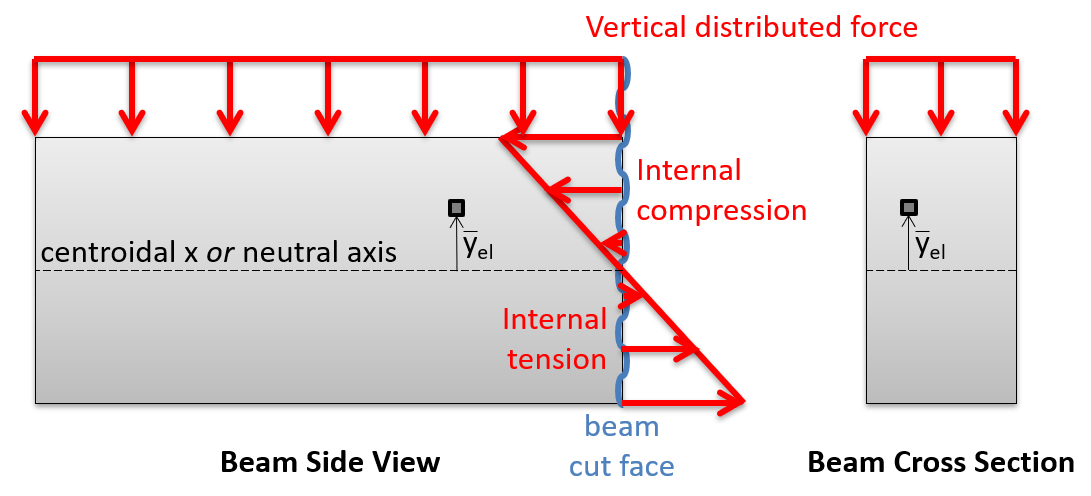As we did when finding centroids in
Section 7.7 we need to evaluate the bounding function of the triangle. The bottom are constant values,
\(y=0\) and
\(x=b\text{,}\) but the top boundary is a straight line passing through the origin and the point at
\((b,h)\text{,}\) which has the equation
\begin{equation}
y(x) = \frac{h}{b} x\text{.}\tag{10.2.5}
\end{equation}
By inspection we see that the a vertical strip extends from the \(x\) axis to the function so \(dA= y\ dx\text{.}\)
Since vertical strips are parallel to the \(y\) axis we can find \(I_y\) by evaluating this integral with \(dA = y\ dx\text{,}\) and substituting \(\frac{h}{b} x\) for \(y\)
\begin{align*}
I_y \amp = \int_A x^2\ dA\\
\amp = \int_0^b x^2\ y\ dx\\
\amp = \int_0^b x^2 \left (\frac{h}{b} x \right ) dx\\
\amp = \frac{h}{b} \int_0^b x^3 dx\\
\amp = \frac{h}{b} \left . \frac{x^4}{4} \right\vert_0^b\\
I_y \amp = \frac{hb^3}{4}
\end{align*}
.
Similarly we will find \(I_x\) using horizontal strips, by evaluating this integral with \(dA = (b-x) dy\)
\begin{align*}
I_x \amp = \int_A y^2 dA
\end{align*}
.
We are expressing
\(dA\) in terms of
\(dy\text{,}\) so everything inside the integral must be constant or expressed in terms of
\(y\) in order to integrate. In particular, we will need to solve
(10.2.5) for
\(x\) as a function of
\(y.\) This is not difficult.
\begin{equation*}
x(y) = \frac{b}{h} y\text{.}
\end{equation*}
Once this has been done, evaluating the integral is straightforward.
\begin{align*}
I_x \amp = \int_A y^2\ dA\\
\amp = \int_0^h y^2 (b-x)\ dy\\
\amp = \int_0^h y^2 \left (b - \frac{b}{h} y \right ) dy\\
\amp = b\int_0^h y^2 dy - \frac{b}{h} \int_0^h y^3 dy\\
\amp = \frac{bh^3}{3} - \frac{b}{h} \frac{h^4}{4}\\
I_x \amp = \frac{bh^3}{12}
\end{align*}
This is the moment of inertia of a right triangle about an axis passing through its base. By reversing the roles of b and h, we also now have the moment of inertia of a right triangle about an axis passing through its vertical side.
\begin{equation*}
I_y = \frac{hb^3}{12}\text{.}
\end{equation*}









